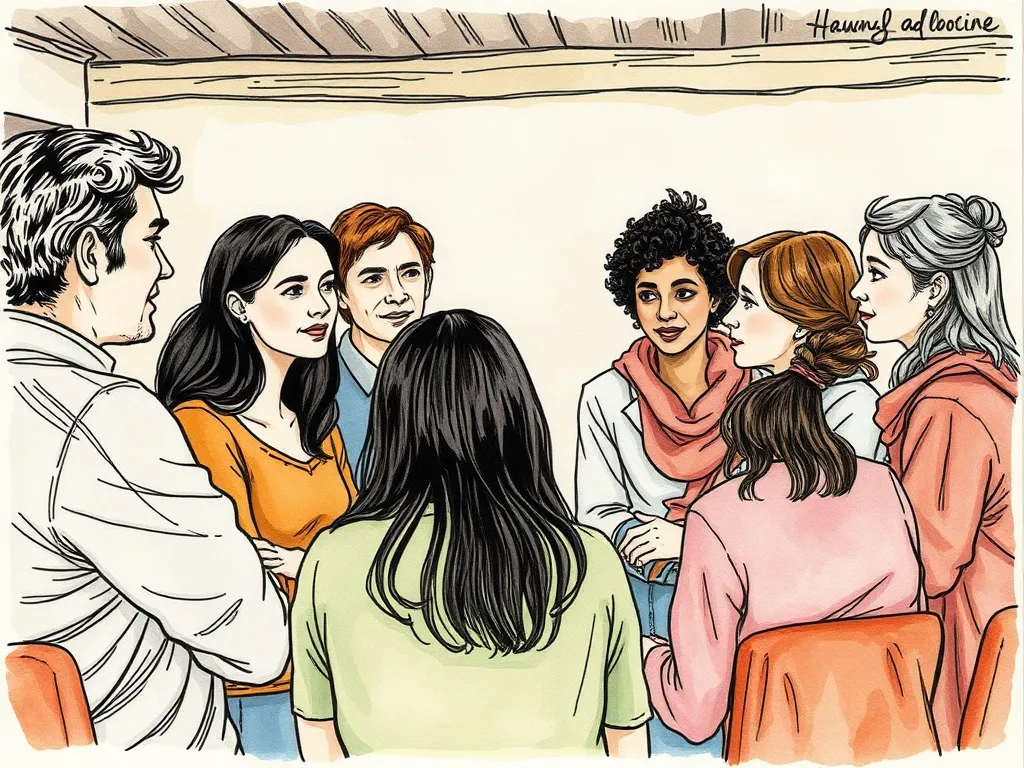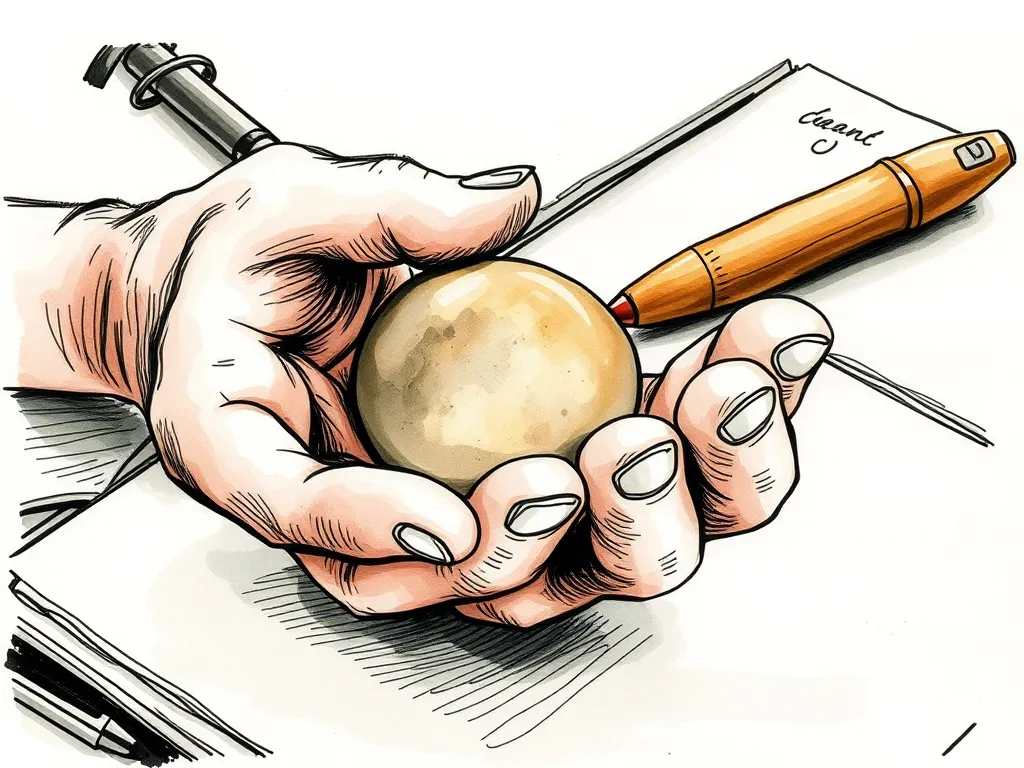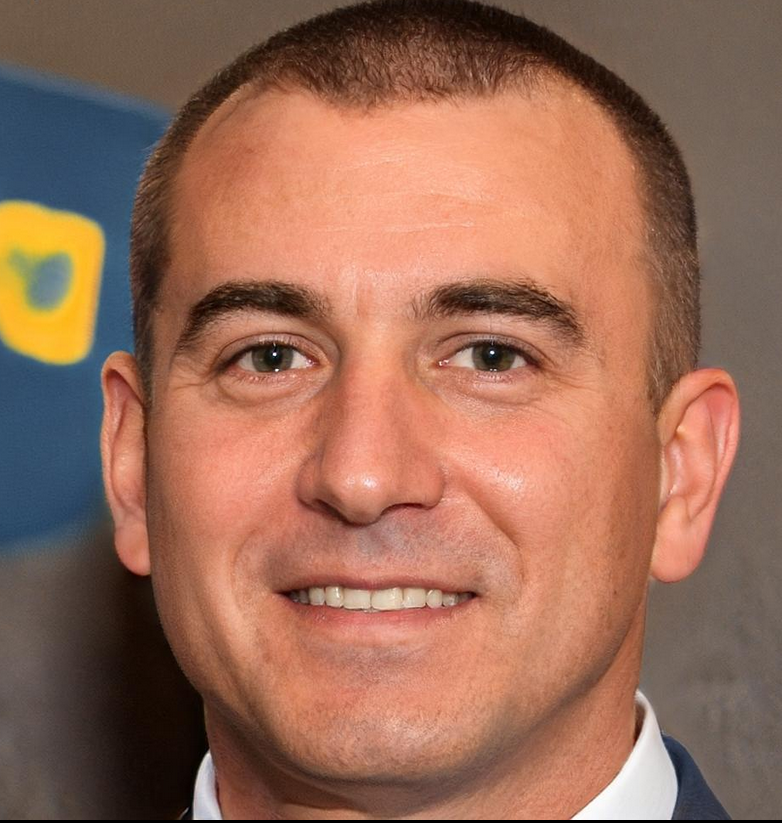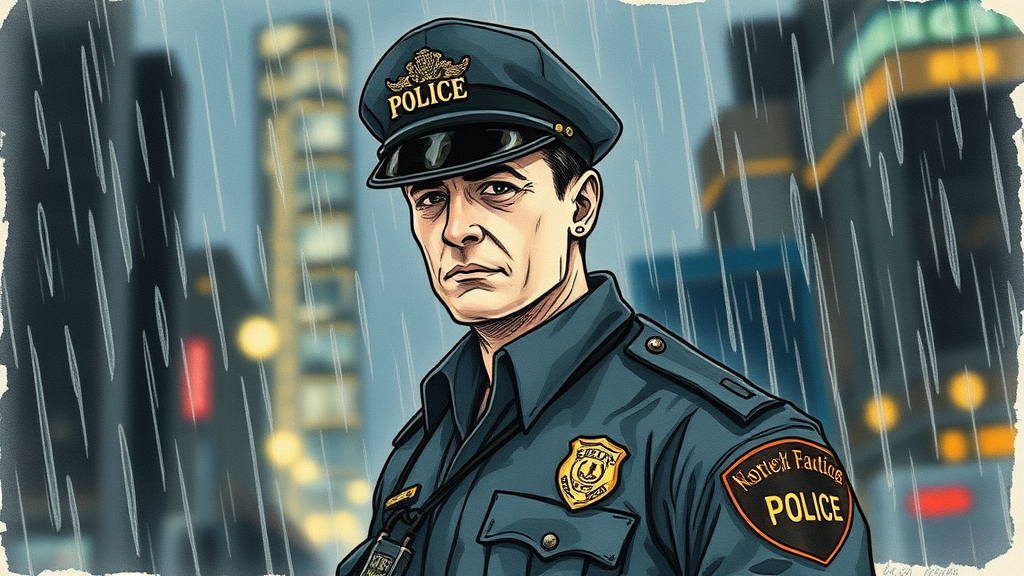· Don Davis · Healthcare Workers · 12 min read
Building Your Mental Go-Bag - Proactive Strategies for Critical Incident Stress
Equip yourself with a 'Mental Go-Bag' for critical incident stress management. Learn proactive mental health strategies & build resilience for traumatic events.

Understanding Critical Incident Stress and Why Preparation Matters
Life can be unpredictable, often throwing us into situations that test our limits. For many, especially those in high-stakes professions like first responders—police officers, firefighters, paramedics, and 911 dispatchers—exposure to traumatic events is an inherent part of the job. But even for the general public, a sudden accident, a natural disaster, or a personal crisis can trigger profound psychological impact. This is where the concept of a “Mental Go-Bag” becomes invaluable: a proactive set of strategies and resources designed to help you navigate, cope with, and recover from critical incident stress.
Critical Incident Stress (CIS) is the emotional, cognitive, behavioral, and physiological impact of an event that overwhelms your usual coping mechanisms. It’s not a sign of weakness; it’s a normal reaction to an abnormal situation. Unaddressed, CIS can lead to chronic stress, anxiety, depression, PTSD, and burnout. While we can’t always prevent traumatic events, we can prepare ourselves mentally, building a robust internal toolkit. This article will guide you through creating your own ‘Mental Go-Bag,’ focusing on proactive mental health for first responders and individuals alike, emphasizing mental resilience training to help you understand how to prepare for a traumatic event.
Why You Need a ‘Mental Go-Bag’
Imagine a traditional “go-bag” – a physical kit packed with essentials like food, water, first aid, and communication tools, ready for an emergency. A ‘Mental Go-Bag’ operates on the same principle, but its contents are psychological and emotional. It’s about having immediate, accessible tools and resources to safeguard your mental well-being when you face significant duress. The urgency for such a proactive approach stems from the cumulative toll of stress and the potential for trauma to disrupt daily life and long-term health.
Developing a ‘Mental Go-Bag’ isn’t about avoiding difficult emotions, but about equipping yourself to process them constructively. The goal isn’t to eliminate stress or trauma—which is often impossible given life’s unpredictable nature—but to mitigate its impact, accelerate recovery, and build long-term psychological strength. This proactive approach to critical incident stress management shifts the focus from reactive damage control to preventive resilience-building, ensuring you have a personalized roadmap for navigating psychological challenges.
Components of Your Mental Go-Bag: Building Your Resilience Toolkit
Your Mental Go-Bag isn’t a physical bag; it’s a personalized collection of habits, techniques, and resources categorized into three tiers, each essential for robust mental well-being and effective stress management.
Tier 1: Foundational Self-Care (Daily Practices)
These are the non-negotiable daily habits that form the bedrock of your mental resilience. Consistent engagement strengthens your baseline, making you less susceptible to the profound impacts of stress and trauma, and providing a stable platform for deeper psychological work.
Physical Health: The Mind-Body Connection
Your physical state profoundly influences your mental state. Prioritizing these areas builds a buffer against stress and enhances your ability to cope:
- Adequate Sleep: Chronic sleep deprivation erodes mental fortitude, impairs decision-making, and heightens emotional reactivity. Aim for 7-9 hours of quality, uninterrupted sleep. For those with demanding schedules or shift work, understanding strategies like Cognitive Behavioral Therapy for Insomnia (CBT-I) as a tool for first responders can be invaluable in improving sleep quality and consistency.
- Nutritious Diet: Fuel your brain effectively. A balanced diet rich in whole foods, lean proteins, and healthy fats supports mood regulation, cognitive function, and energy levels. Limit processed foods, excessive sugar, and caffeine, which can exacerbate anxiety.
- Regular Exercise: Physical activity is a powerful stress reducer, releasing endorphins and improving mood. It also helps dissipate pent-up energy and anxiety. Even short, consistent bursts of activity—like a brisk walk or a few minutes of stretching—can make a significant difference in your daily well-being.
Mindfulness & Stress Reduction Techniques
Integrating mindfulness into your routine helps you stay present, observe thoughts without judgment, and calm your nervous system, offering immediate relief and long-term benefits.
- Mindful Breathing: Simple deep breathing exercises can immediately reduce physiological stress responses, lower heart rate, and promote relaxation. Practice techniques like box breathing (inhale for 4, hold for 4, exhale for 4, hold for 4) or 4-7-8 breathing (inhale 4, hold 7, exhale 8) daily.
- Meditation: Even 5-10 minutes of daily meditation can rewire your brain for greater calm, focus, and emotional regulation. There are numerous guided meditations available for beginners.
- Journaling: A powerful tool for processing thoughts and emotions, identifying triggers, and tracking progress over time. Writing freely can provide clarity and release emotional tension, allowing you to observe patterns in your responses.
Healthy Hobbies & Interests
Engaging in activities purely for enjoyment and relaxation provides an essential escape from stress and recharges your mental batteries. Whether it’s reading, gardening, playing music, creative arts, hiking, or spending time with pets, these outlets offer a sense of accomplishment, pleasure, and purpose that counters the demands of stressful situations. They provide a vital mental break and a space for self-expression.
Tier 2: Proactive Psychological Tools (Before, During, After an Incident)
These are specific techniques you can deploy strategically to prepare for, navigate, and process critical incidents, bolstering your mental resilience training and empowering you to respond effectively under pressure.
Pre-Incident: Visualization & Scenario Planning
Just as a pilot visualizes a flight, or a soldier rehearses a mission, you can mentally prepare for potential stressors. This mental rehearsal can significantly reduce anxiety and improve performance when a real situation arises.
- Positive Visualization: Imagine yourself calmly and competently handling challenging situations, seeing yourself successfully employing your coping strategies. This builds confidence and reduces anticipatory anxiety.
- “What If” Scenarios: Think through how you might react to specific stressors, not to dwell on fear, but to mentally pre-plan your coping responses. For instance, if you anticipate a difficult conversation, mentally rehearse how you’ll manage your emotions and communicate effectively. This is a key component of how to prepare for a traumatic event, allowing for a sense of control.
During an Incident: Emotional Regulation & Grounding Techniques
When stress or overwhelm hits, these immediate tools help you maintain composure, stay present, and focus on the task at hand.
- Grounding Techniques: If you feel overwhelmed, disoriented, or disconnected, engage your senses to bring yourself back to the present moment. A common technique is the 5-4-3-2-1 method: Name 5 things you can see, 4 things you can hear, 3 things you can feel, 2 things you can smell, and 1 thing you can taste.
- Self-Talk & Reframing: Challenge negative or catastrophizing thoughts. Instead of thinking, “I can’t handle this,” reframe it to, “I’m strong, I’ve handled tough things before, and I can take this one step at a time.” Positive, realistic self-talk can dramatically shift your perspective.
- Tactical Breathing: A variation of mindful breathing used by military and first responders to calm the nervous system quickly in high-stress moments. It involves specific inhale, hold, and exhale counts, often equal, to regulate your physiological response.

Post-Incident: Debriefing & Processing
The immediate aftermath of a critical incident is crucial for healthy processing and preventing long-term psychological impact.
- Self-Debriefing: Take time to reflect on what happened, your role, your actions, and your feelings. Journaling can be especially useful here to organize thoughts and emotions, preventing them from festering.
- Peer Support: Connecting with colleagues or peers who understand your experience can be immensely validating and provide a safe space to share without judgment. Articles like “The Silent Strain: Trauma and Mental Health Among EMTs in Alberta” highlight the importance of peer support networks for those on the front lines, recognizing the specific challenges faced by professionals in demanding roles. Similarly, understanding strategies specifically for 911 dispatchers dealing with unseen trauma underlines the unique needs of various professions and the power of shared experience in healing.
Tier 3: Support Network & Professional Resources (When You Need Help)
Even with robust self-care and coping strategies, there will be times when you need external support. Knowing where to turn, and having those connections established beforehand, is a critical part of your Mental Go-Bag.
Building a Strong Personal Support System
Your friends, family, and trusted confidantes are vital anchors. They provide emotional comfort, a sense of belonging, and perspective.
- Open Communication: Share your experiences and feelings with those you trust. Don’t suffer in silence; vulnerability can be a powerful pathway to connection and healing.
- Set Boundaries: Learn to say no to additional commitments and protect your time and energy, especially after stressful events. This is especially true for those navigating intense professional lives, such as learning how to effectively manage issues like hypervigilance and irritability often experienced by police officers as they transition from work to home life.
Identifying Professional Help
Sometimes, what you’re experiencing is beyond self-management, and that’s perfectly normal and healthy. Seeking professional help is a sign of strength, not weakness.
- Therapists & Counselors: Seek out mental health professionals experienced in trauma, critical incident stress management, or specific conditions like PTSD. Many specialize in working with first responders and can offer tailored support for the unique mental health challenges faced by EMTs, for instance, providing a deeper understanding of their experiences and specialized therapeutic interventions.
- Employee Assistance Programs (EAPs): If available through your employer, EAPs offer confidential counseling services (often for a limited number of sessions), legal advice, financial consultation, and other resources. Familiarize yourself with how to access these services.
Emergency Contacts & Hotlines
Have a list of crisis hotlines, emergency services, or trusted contacts readily accessible. This might include your therapist’s number, a crisis text line, or a national suicide prevention lifeline. These are your ultimate safety net, ready for immediate deployment.
Building Your Personalized ‘Mental Go-Bag’: Actionable Steps

Creating your ‘Mental Go-Bag’ is an ongoing process, not a one-time event. It requires self-awareness, commitment, and consistent effort.
- Assess Your Baseline: How are your physical health habits? What are your current stress levels? Identify areas needing improvement and where you already excel.
- Inventory Your Coping Strategies: What helps you relax? What brings you joy? Make a comprehensive list of your existing effective coping mechanisms, noting which ones are most effective for different types of stress.
- Learn New Skills: Explore mindfulness techniques, specific breathing exercises, or cognitive behavioral techniques. Practice them regularly so they become second nature and are accessible when truly needed, not just during calm moments.
- Identify Your Support Network: Who are the 3-5 people you can truly confide in? Make sure they know you might reach out and that they are prepared to offer support. Consider professional contacts as well.
- Research Professional Resources: Know your EAP details, local therapists specializing in trauma, or peer support groups before a crisis hits. Having this information readily available reduces decision-making stress during a difficult time.
- Create a Digital or Physical Checklist: Keep a concise list of your go-bag components (e.g., “Daily 10-min meditation,” “Call friend X,” “Review EAP details,” “Practice box breathing”) in an accessible place, like your phone’s notes app, a small notebook, or laminated card in your wallet.
- Practice, Practice, Practice: The effectiveness of your go-bag depends on consistent practice of its components, especially the self-care and proactive psychological tools. Regular engagement builds habits that become automatic responses in high-stress situations.
Maintaining Your Mental Go-Bag
Your mental resilience, like physical fitness, requires consistent upkeep. It’s not a set-it-and-forget-it system.
- Regular Review: Periodically review your Mental Go-Bag – perhaps quarterly, or after any significant life event. Are your strategies still working? Have your support contacts changed? Are there new resources available?
- Adjust as Needed: Life circumstances change, and so might your needs. Be flexible and willing to adapt your strategies, letting go of what no longer serves you and incorporating new, more effective approaches.
- Debriefing and Learning: After a particularly stressful period, take time to reflect on what worked well and what didn’t. Use this insight to refine your go-bag, making it an even more effective tool for future challenges.
FAQ: Your Mental Go-Bag
Q1: Is a ‘Mental Go-Bag’ only for first responders?
A1: Absolutely not. While the concept is highly relevant for first responders due to their frequent exposure to traumatic events, anyone can benefit from developing proactive mental health strategies. Life inevitably presents challenges and unexpected crises, and building mental resilience is crucial for general well-being, regardless of profession or background. It teaches everyone how to prepare for a traumatic event and enhance their psychological fortitude.
Q2: How is this different from just “coping strategies”?
A2: A ‘Mental Go-Bag’ is a more structured, comprehensive, and proactive approach than merely having a list of coping strategies. While coping strategies are individual techniques, the ‘Go-Bag’ emphasizes a tiered system of preparation that includes consistent daily habits (foundational self-care), specific psychological tools for immediate use (proactive tools), and pre-identified support systems (professional resources). It’s about building a robust, readily deployable system, not just a collection of disconnected tactics, for effective critical incident stress management.
Q3: How often should I “pack” or review my Mental Go-Bag?
A3: Think of it as an ongoing practice rather than a one-time packing. Your foundational self-care (Tier 1) should be integrated into your daily routine. Your psychological tools (Tier 2) should be practiced regularly so they become second nature. Reviewing your support network and professional resources (Tier 3) should happen at least annually, or after any significant life changes or major stressful events, to ensure all contacts and information are current.
Q4: Can I build my ‘Mental Go-Bag’ on my own, or do I need a professional?
A4: You can certainly start building your ‘Mental Go-Bag’ on your own by implementing the self-care and proactive psychological tools discussed. Many resources are available for mindfulness, breathing, and basic cognitive techniques. However, if you are struggling with chronic stress, have experienced significant trauma, or believe you might have a mental health condition like PTSD or severe anxiety, seeking guidance from a mental health professional is highly recommended. They can help you personalize your strategies, provide specialized support for critical incident stress management, and offer therapeutic interventions tailored to your specific needs.
Conclusion
Building a ‘Mental Go-Bag’ is an empowering act of self-care and a testament to your commitment to mental well-being. It’s about being prepared, not paranoid; proactive, not reactive. By consistently nurturing your foundational self-care, mastering proactive psychological tools, and knowing your support systems, you equip yourself with the mental resilience needed to face life’s inevitable challenges. This personalized toolkit transforms potential crises into opportunities for growth and strength, allowing you to navigate critical incident stress with greater calm and competence. Start packing yours today.

Don Davis
15+ years of emergency response experience. Passionate about connecting our first responder communities with critical resources. Author of hundreds of articles and guides on First Responders mental health care. When not responding to emergencies, you can find me playing with my dogs, hiking, or enjoying a good book.
Ready to connect with a provider?
Allow us to connect you with a provider who can help.


